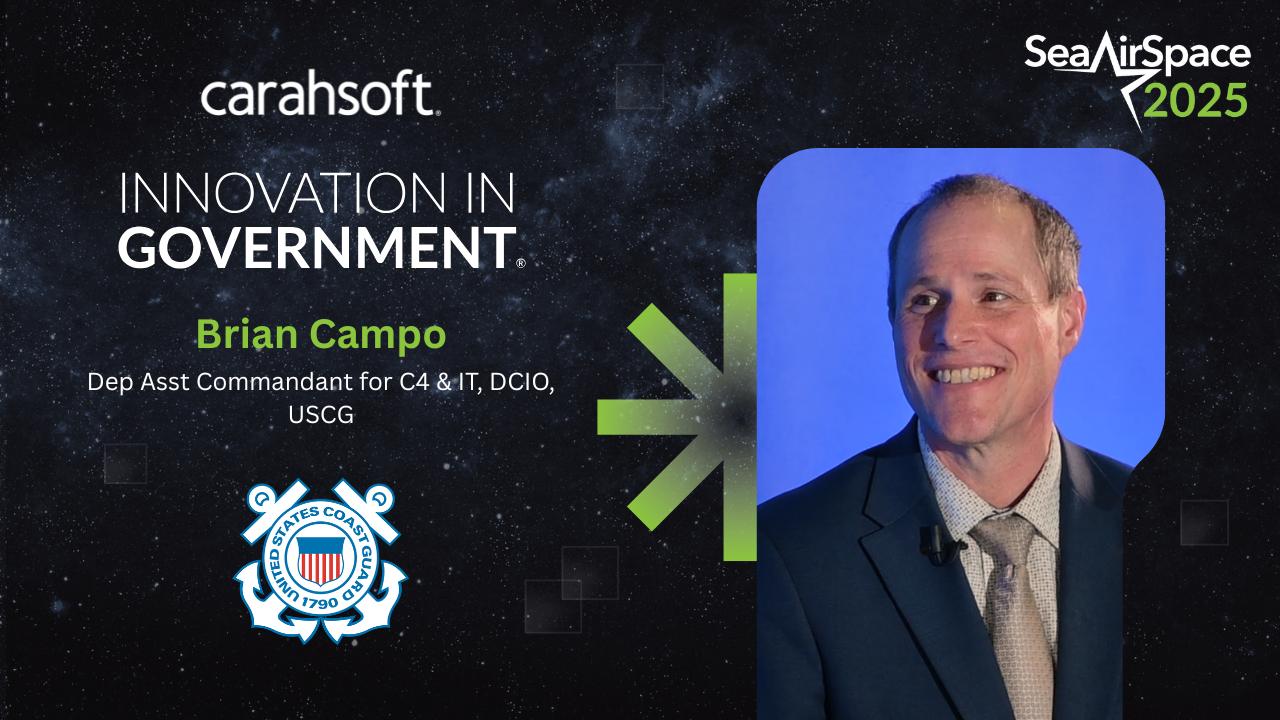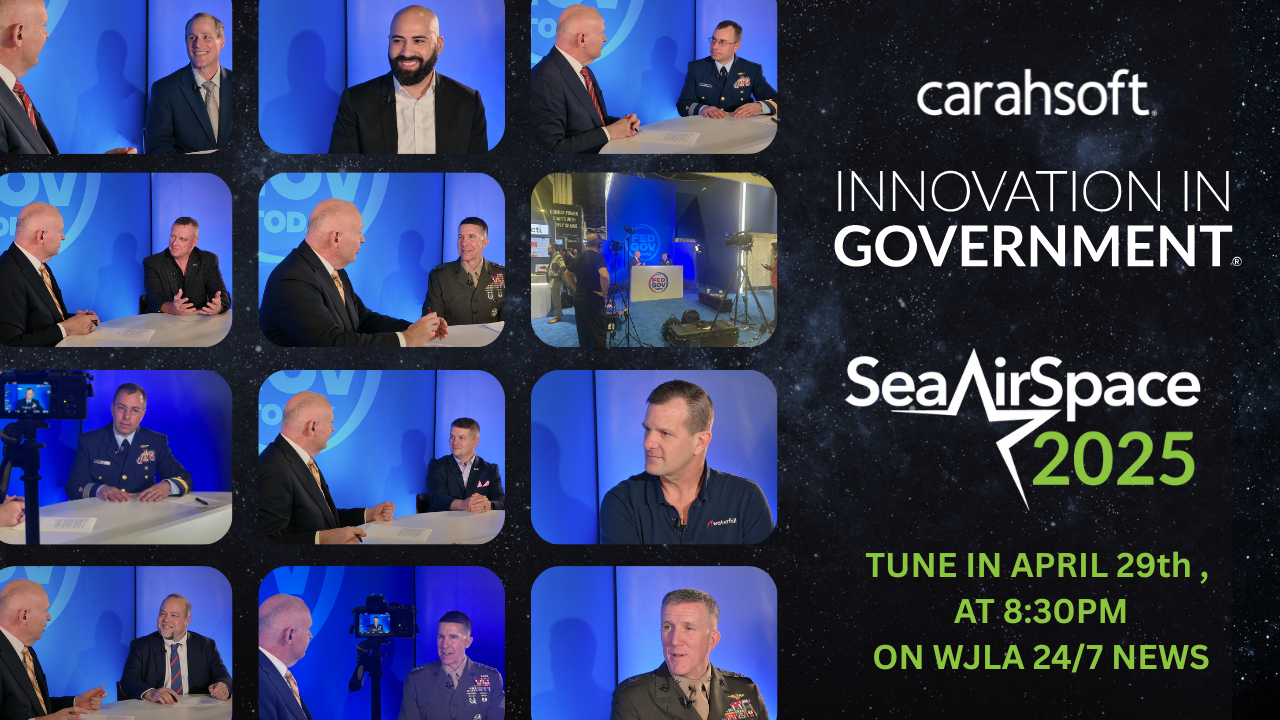Original Broadcast on Innovation in Government on 4/29/25
Presented by Carahsoft
The U.S. Coast Guard stands at a strategic crossroads. As its operational tempo increases—particularly along the southern border and in the Arctic—the need to modernize an aging fleet while sustaining current missions presents an immense challenge. Rear Admiral Matt Lake, Assistant Commandant for Resources and Chief Financial Officer, shared how the service is confronting that challenge head-on, balancing recapitalization with financial prudence and operational continuity.
RDML Lake emphasized that 85% of the Coast Guard’s $13 billion budget is dedicated to operations and sustainment. That includes military pay and depot-level maintenance of the fleet. The remaining 15% is allocated toward future readiness—recapitalizing ships, infrastructure, and aircraft. “We’re operating cutters built in the 1960s,” Lake noted. “We’ve done a tremendous job maintaining them, but we need to recapitalize those assets at speed.”
 One standout example of successful acceleration was the recent purchase of a commercially available icebreaker. With Arctic operations becoming increasingly strategic, the Coast Guard acted swiftly, securing the vessel within months after receiving congressional funding and legislative flexibility. It was, in Lake’s words, “a great acquisition success story”—proof that off-the-shelf solutions can deliver faster, more cost-effective capability.
One standout example of successful acceleration was the recent purchase of a commercially available icebreaker. With Arctic operations becoming increasingly strategic, the Coast Guard acted swiftly, securing the vessel within months after receiving congressional funding and legislative flexibility. It was, in Lake’s words, “a great acquisition success story”—proof that off-the-shelf solutions can deliver faster, more cost-effective capability.
This fast-tracked procurement is just one piece of a broader infrastructure push. Major ports such as Charleston, Newport, and Seattle are receiving substantial upgrades to support the service’s modernizing fleet. From maintenance bays to hangars for next-generation aircraft, Lake said these investments are clustered to maximize impact. They also reflect a more resilient design philosophy—rebuilding hurricane-damaged facilities to withstand future events and maintain continuity of operations.
Financial foresight remains at the core of Lake’s planning. He underscored the importance of understanding lifecycle costs before committing to any acquisition. “You don’t want to buy an expensive car and then realize you can’t afford the oil changes,” he said. “That’s what I focus on—making sure we understand maintenance requirements and can sustain the platforms we buy over 20-plus years.”
In an era of high operational demand and tight fiscal constraints, Lake’s message is clear: recapitalization is not just a procurement issue—it’s a strategic imperative grounded in long-term sustainability, mission assurance, and operational readiness.
Key Takeaways:
-
Many Coast Guard cutters are over 60 years old, underscoring urgent recapitalization needs.
-
Agile acquisition enabled a rapid icebreaker purchase to strengthen Arctic capabilities.
-
Infrastructure upgrades are clustered around major ports to support new assets and aircraft.



